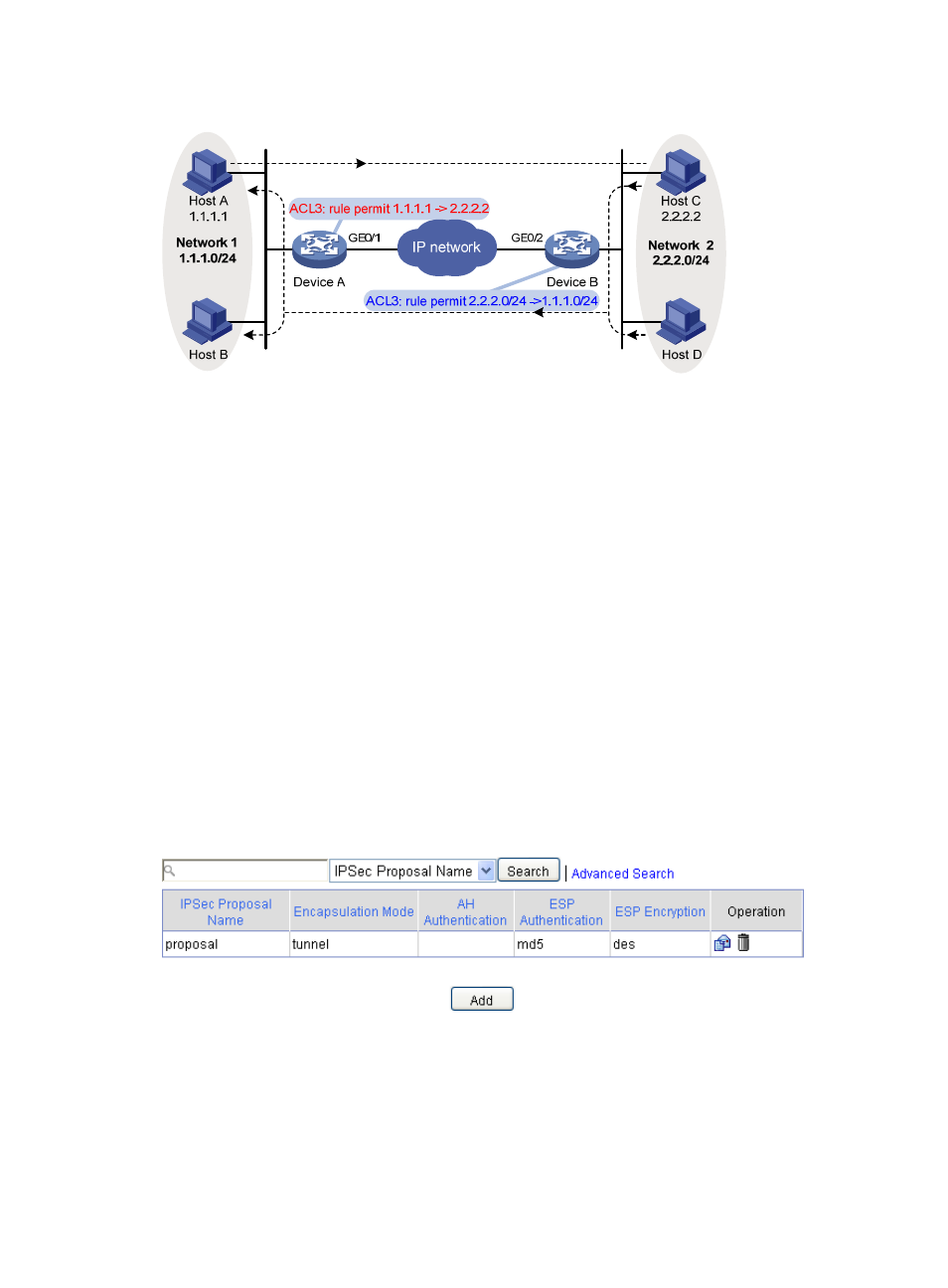Protection modes, Configuring an ipsec proposal, Configuring an ipsec – H3C Technologies H3C SecPath F1000-E User Manual
Page 174: Proposal, Figure 107, The r, N in

162
Figure 107 Non-mirror image ACLs
Protection modes
Data flows can be protected in the following modes:
•
Standard mode—One tunnel is used to protect one data flow. The data flow permitted by each ACL
rule is protected by one tunnel that is established separately for it.
•
Aggregation mode—One tunnel is used to protect all data flows permitted by all the rules of an ACL.
This mode applies to only scenarios that use IKE for negotiation.
For more information about ACL configuration, see Access Control Configuration Guide.
To use IPsec in combination with QoS, make sure that IPsec's ACL classification rules match the QoS
classification rules. If the rules do not match, QoS may classify the packets of one IPsec SA to different
queues, causing packets to be sent out of order. When the anti-replay function is enabled, IPsec will
discard the packets beyond the anti-replay window in the inbound direction, resulting in packet loss. For
more information about QoS classification rules, see Network Management Configuration Guide.
Configuring an IPsec proposal
1.
Select VPN > IPSec > Proposal from the navigation tree to enter the IPsec proposal management
page.
Figure 108 IPsec proposal list
2.
Click Add to enter the IPsec proposal configuration wizard page.
The Web interface provides two modes for configuring an IPsec proposal: suite mode and custom
mode. The suite mode allows you to select a pre-defined encryption suite. The custom mode allows
you to configure IPsec proposal parameters discretionarily.
- H3C SecPath F5000-A5 Firewall H3C SecPath F1000-A-EI H3C SecPath F1000-E-SI H3C SecPath F1000-S-AI H3C SecPath F5000-S Firewall H3C SecPath F5000-C Firewall H3C SecPath F100-C-SI H3C SecPath F1000-C-SI H3C SecPath F100-A-SI H3C SecBlade FW Cards H3C SecBlade FW Enhanced Cards H3C SecPath U200-A U200-M U200-S H3C SecPath U200-CA U200-CM U200-CS
